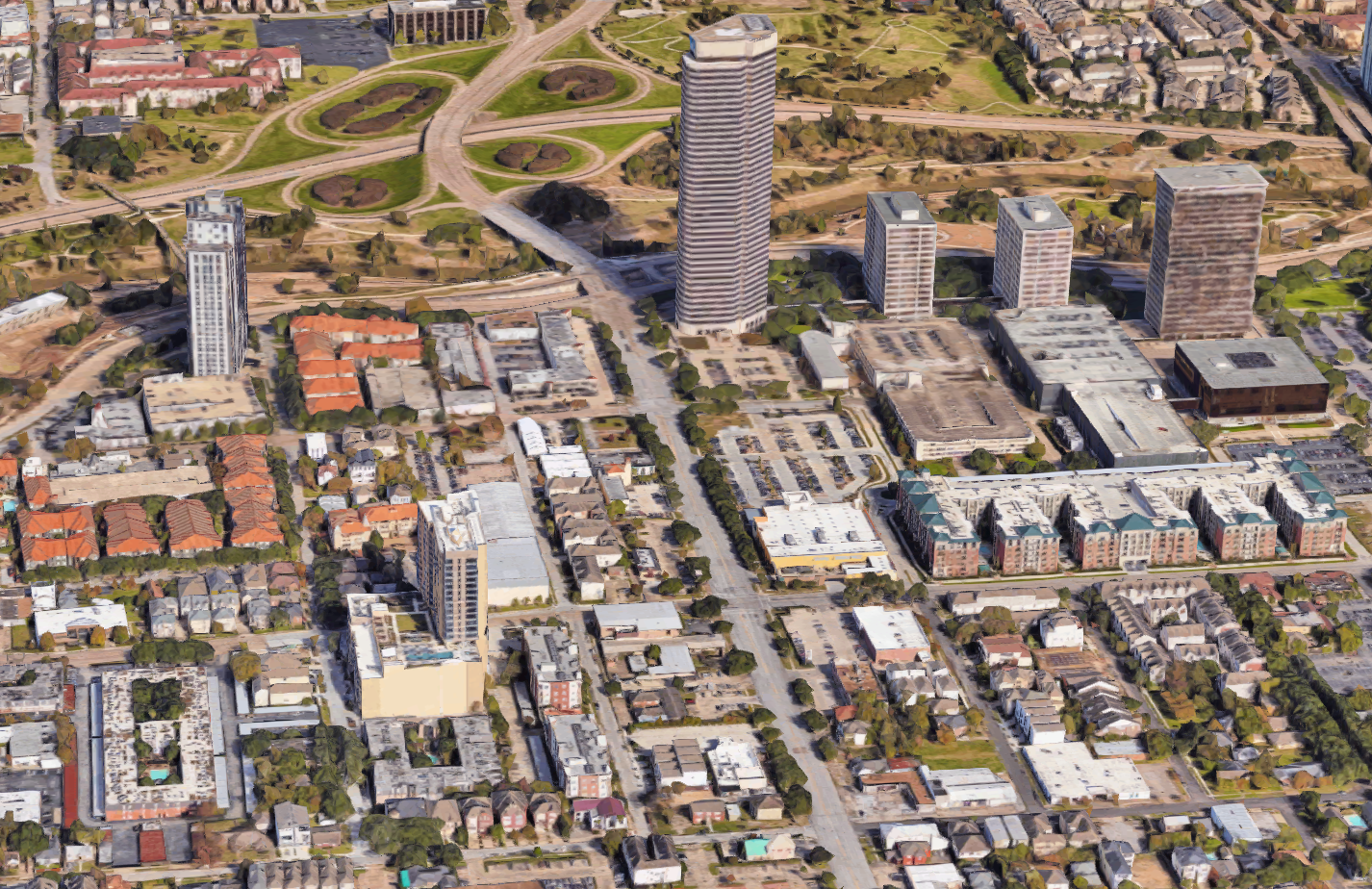How Houston Is Becoming America’s Next Dense City
More Than “Just Sprawl,” Houston’s Lighter Land-Use Regulations Are Helping it Grow Up

Anyone who advocates for “Market Urbanism”—aka free-market city policy—must grapple with a common response: “but then we’ll get a bunch of Houstons.” The implication is that Houston is a sprawling mess of traffic, pollution, and bad architecture, and has become this way due to no regulation. The city doesn’t have zoning, after all, and skeptics warn that replicating it will lead to the same urban form elsewhere.
But Houston’s narrative should be more complicated. If I were to summarize Houston, I’d say the aspects of it that thrive are due to it having a functioning market; while the aspects of it that urbanists hate are the outcome of its centrally-planned paradigm. Let’s unpack both.
Houston’s Sprawl
The first thing to understand about Houston land use is that it’s not really a free market. While it doesn’t technically have zoning, it has other regulations that replace it, and that would be common in other municipal zoning codes. As Ryan Holeywell notes for the Kinder Institute for Urban Research, it has deed restrictions in some neighborhoods that are sanctioned by residents or developers, and protected by the city. It has lot size minimums of 5,000sqft for single-family homes. The minimum required setback is 25 feet on some properties, and there are minimum parking requirements throughout much of the city. This all has the effect of discouraging infill housing.
Houston has, at the same time, subsidies that encourage sprawl; there are a network of local, state, and federal roads that have been built throughout the metro, at greater capacity than is found elsewhere in the U.S.
Houston’s Density
But Houston still has fewer-than-normal regulations against density. The lack of zoning is key here: unlike other major U.S. cities, which have broad swaths on their zoning maps to separate residential, commercial, and industrial structures, those uses can be built together in Houston. This has not created some anarchy of incompatible uses, since market forces still mostly separate them. But it does cause housing to get squeezed into tighter and more unorthodox spaces—as this great Houston Chronicle photo essay shows. While lot-size minimums, setbacks, and parking requirements do exist, they vary, or are not enforced at all, depending on the neighborhood. Developers can sometimes lobby for waivers anyway. Unlike other cities, Houston allows accessory dwelling units and micro-units, making tiny living possible. Houston does not regulate for density in many areas—which is almost unheard of in urban America.
All this means there are fewer barriers to construction—and lots of construction happens in the core. A recent Curbed piece talks about how much denser and more urban the city is getting.
“Houston is projected to add roughly 16,000 units this year alone, according to a report from commercial real estate firm JLL, with another 23,000 in the pipeline,” writes Patrick Sisson. “For the first time this year, according to the long-running Kinder Houston Area Survey administered by Rice University, a majority or near majority of local respondents wanted to live in denser, mixed-use neighborhoods.”
This is backed by the city’s real estate trends. Houston is routinely at or near the top of the list for most annual housing permits issued, and this includes for multi-family housing. It has America’s 4th-most skycrapers, which are mostly spread across 3 separate business districts, but pop up anywhere (again, no zoning). Much of the additional multi-family goes across the city, from trendy neighborhoods like Montrose and Midtown, to outlying immigrant ones. I found while writing a 2017 analysis for Forbes that Houston is denser than similar Sunbelt cities. And the Kinder Institute notes that in some neighborhoods, density matches levels found in East Coast cities. Sisson writes that this will likely increase, as concerns about flooding and traffic push consumers to seek higher-elevated, centrally-located areas.
Houston’s Affordability
There’s a quality about Houston, though, that transcends its built pattern: affordability. For decades, Houston has been the nation’s leading example of an “opportunity city”. It has, like coastal cities, high demand—aka fast growing job opportunities and population growth. But unlike those metros, it builds lots of housing, thus stabilizing prices. The median home price is $190,000, which is just 4/5ths the national average, according to Zillow. Midtown’s median home prices are $309,000, extremely low for a centrally-located urban neighborhood. This affordability has made Houston a refuge for expats from expensive states, and for immigrants—it is now the nation’s most diverse city.
The affordability can be tied to both Houston’s density and sprawl. Rather than one being good and the other bad, both forms of growth have helped stabilize prices. But the multi-family infill housing is the most organic outcome to be found in the Houston model. If America had a more market-oriented urban approach, those aspects of Houston—the density and affordability—would be the ones most likely replicated. For this reason, “getting a bunch of Houstons” should be an urbanist goal.
Catalyst articles by Scott Beyer | Full Biography and Publications
